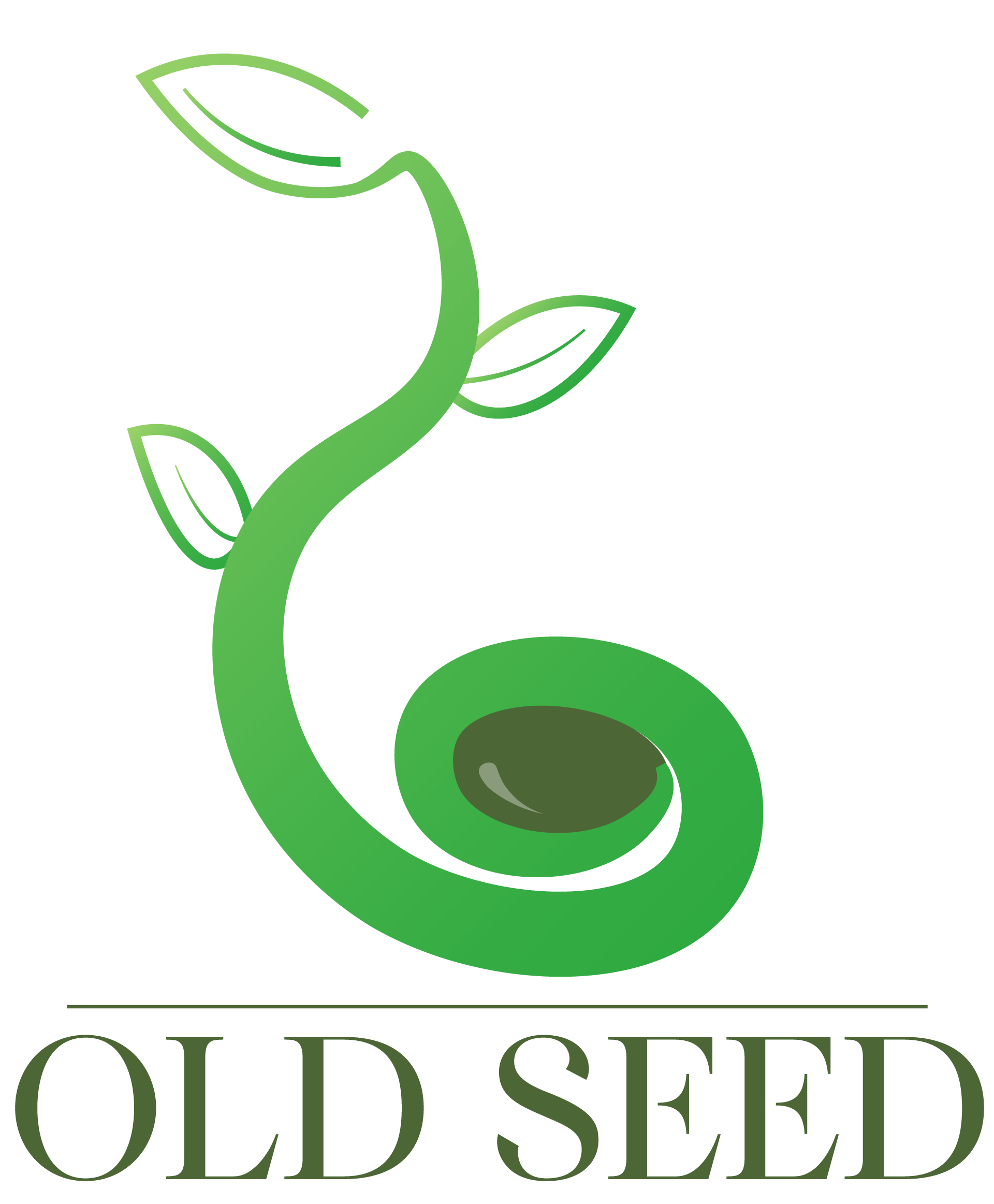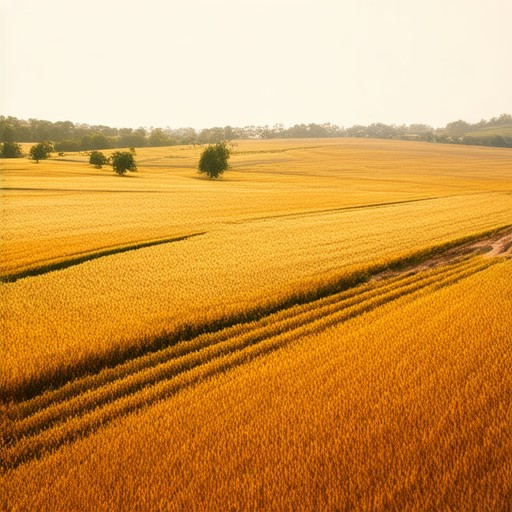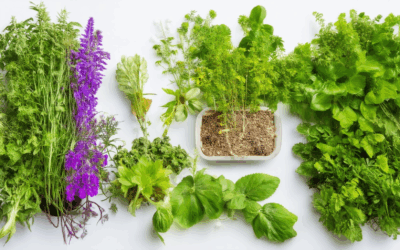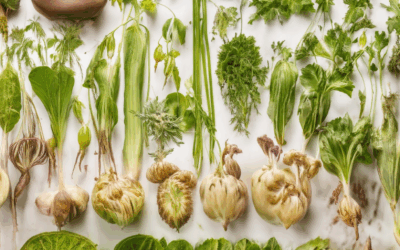Exploring the Time-Honored Practice of Traditional Seed Farming
Traditional seed farming represents a cornerstone of sustainable agriculture, offering a bridge between ancient wisdom and modern farming practices. Rooted in centuries of experience, this method emphasizes the preservation of biodiversity and the cultivation of heirloom seeds, which are passed down through generations. By focusing on traditional farming techniques, farmers and gardeners alike can harness the power of resilient, adaptive crops that thrive in diverse environments.
This article delves into the essence of traditional seed farming, examining its practices, the types of seeds involved, and the cultural significance of heirloom varieties. We will explore how traditional farming methods contribute to soil health, water conservation, and biodiversity, making them a vital component of sustainable agriculture. Additionally, we will examine the profitability of seed farming, the role of seeds in historical and contemporary agricultural systems, and how traditional methods compare to modern urban farming practices.
Whether you’re a seasoned farmer or a curious novice, this exploration of traditional seed farming will provide valuable insights into the importance of seeds as the foundation of life—and the enduring legacy of practices that have shaped civilizations for millennia.
Key Takeaways
- Biodiversity Maintenance: Seeds play a critical role in preserving genetic diversity, essential for sustainable agriculture and global food security.
- Cultural Significance: Heirloom seeds hold historical and cultural value, symbolizing fertility and renewal, while also tying into human-environment interactions.
- Food Security: The development and preservation of high-yield seed varieties are central to addressing global food demands and ensuring reliable crop production.
- Sustainable Practices: Heirloom gardening emphasizes eco-friendly practices that enhance biodiversity and reduce environmental impact.
- Cost-Effective and Self-Sufficient: Seed farming offers a budget-friendly way to grow your own plants, promoting self-sufficiency and reducing reliance on store-bought products.
- Urban Farming Benefits: Urban farming integrates sustainable methods like vertical farming and hydroponics, contributing to local economies, community engagement, and environmental health.
What is the traditional method of seed?
The traditional method of seed sowing involves various techniques that have been practiced for centuries to ensure optimal growth and productivity. One common approach is seed dropping behind the plough , a method widely used in rural areas. This technique utilizes a simple yet effective tool called the “malobansa,” which is essentially a bamboo tube with a funnel-shaped mouth attached to a stick. As the plow moves forward, the seeds are gently released into the furrow, ensuring proper distribution and germination rates.
Another traditional method includes broadcasting seeds by scattering them evenly across prepared fields. This approach relies on natural selection and local conditions, making it efficient for large-scale planting. Additionally, dibbing is a technique where seeds are planted shallowly in rows, typically followed by light covering with soil. This method is particularly useful for small gardens or specific crops that require precise placement.
Timing and spacing are crucial aspects of traditional sowing. Seeds are often planted during the late winter or early spring, depending on the region and climate. Proper spacing ensures competition among plants is minimized, allowing each seed to maximize its potential. This hands-on approach, though labor-intensive, preserves traditional farming practices and contributes to sustainable agriculture.
Competitors in the agricultural sector offer modernized versions of these traditional methods, incorporating advanced technologies to enhance efficiency. Companies like John Deere and Agco provide machinery that supports traditional seeding techniques while improving productivity. By embracing these methods, farmers can maintain age-old practices while benefiting from contemporary innovations.
At Old Seed, we advocate for the preservation and refinement of these traditional farming techniques, recognizing their importance in fostering sustainable and resilient agricultural systems. Our mission is to support eco-conscious gardeners and farmers who value heritage and tradition, ensuring that these methods continue to thrive in the modern era. Explore our resources on traditional farming methods and sustainable agriculture practices to learn more about preserving these valuable techniques.
Examples of Traditional Seeds
- Safflower Seeds
- Castor Oil Seeds
- Pulses (e.g., Lentils, Chickpeas)
- Sesame Seeds
- Cottonseed and Cotton Lint
- Lentils
- Fennel Seeds
- Flaxseeds
- Chia Seeds
- Quinoa
- Amaranth
- Millet
Is Seed Farming Profitable?
Seed farming can indeed be a highly profitable venture, offering both financial returns and environmental benefits. Here’s a breakdown of why it stands out as a rewarding endeavor:
- Demand Outpaces Supply : The global demand for high-quality seeds, particularly heirloom and organic varieties, consistently exceeds supply. This creates a favorable market condition for farmers.
- High Value Per Unit : Seeds themselves are highly valuable compared to most crops. A small plot of land can yield a significant return due to the premium pricing of specialized seeds.
- Sustainability and Market Demand : With increasing consumer interest in sustainable agriculture, seeds that promote eco-friendly practices are in high demand. Farmers who specialize in heirloom or native seeds can tap into this growing market.
- Resilience and Adaptability : Many seed varieties are naturally resilient, making them ideal for diverse growing conditions. This adaptability reduces risks associated with climate change and fluctuating markets.
Old Seed emphasizes the importance of sustainable practices, which not only benefit the environment but also enhance long-term profitability. By focusing on heirloom seeds, farmers contribute to biodiversity while meeting the demands of conscious consumers.
Competitors like Seed Sovereignty and Heritage Seed Library highlight the potential of seed farming, showcasing its viability as a sustainable livelihood. These organizations stress the economic rewards of nurturing diverse seed stock, aligning with Old Seed’s mission to promote traditional farming methods.
For those interested in getting started, Old Seed offers comprehensive guides and resources to help you navigate the complexities of seed farming. Whether you’re aiming to sell directly to consumers or supply local markets, seed farming presents a unique opportunity to combine profitability with purpose.
Seed Agriculture in AP Human Geography
Seed agriculture plays a pivotal role in understanding agricultural practices and ecosystems within the framework of AP Human Geography. Seeds serve as the foundational element of crop production, enabling the growth of plants essential for food security and biodiversity.
The Role of Seeds in Agricultural Systems
- Biodiversity Maintenance: Seeds contribute to genetic diversity, which is crucial for adaptability in changing environments. This is explored in the context of sustainable agriculture and its importance for global food supplies.
- Cultural Significance: Seeds have historical and cultural meanings, often symbolizing fertility and renewal. This ties into the study of human-environment interactions and agricultural traditions.
- Food Security: The development and preservation of high-yield seed varieties are central to addressing food insecurity, a key theme in AP Human Geography.
Heirloom Gardening and Sustainable Practices
Old Seed emphasizes the importance of heirloom gardening, which focuses on preserving and growing traditional seed varieties. These practices are examined in the context of sustainable agriculture, highlighting their role in maintaining agricultural biodiversity and ecological balance.
Competitors and Market Analysis
When comparing seed agriculture practices, competitors like Seed Savers offer similar missions but with slight variations in their approach to seed preservation and distribution. Understanding these differences helps in analyzing market dynamics and consumer preferences.
Preservation and Conservation Efforts
Seed conservation efforts, such as those promoted by Old Seed, are vital for maintaining genetic diversity. This is a key aspect of studying agricultural systems and their resilience against environmental challenges.
For further reading on seed agriculture and sustainable practices, explore Old Seed ‘s comprehensive guide on heirloom gardening and seed preservation.
What is Seed Farming?
Seed farming is the process of growing plants from seeds to produce crops for various purposes, such as food, fiber, or ornamental use. This method allows individuals or businesses to propagate plants and ensure a consistent supply of materials. Seed farming can be conducted on a small scale, such as in home gardens, or on a larger commercial basis.
Steps to Start Seed Farming:
- Selecting the Right Seeds
- Choose seeds based on your climate, soil type, and intended use. Heirloom seeds are popular for their hardiness and historical resistance to pests, while hybrid seeds may offer better yields or disease resistance.
- Preparation
- Prepare the planting area by tilling the soil and ensuring proper drainage. Seedlings require adequate space to grow, so plan your layout accordingly.
- Planting Techniques
- Seeds can be planted indoors under lights or outdoors once the weather conditions are suitable. Follow guidelines for sowing depth and spacing to maximize growth potential.
- Watering and Sunlight
- Keep the soil moist but not waterlogged. Most seeds require full sun to thrive, though some varieties may prefer partial shade.
- Monitoring Growth
- Regularly check the plants for signs of stress or disease. Apply fertilizers or pesticides as needed, always following product instructions to avoid harming the seeds.
- Harvesting
- Collect seeds when the plants reach maturity, typically indicated by color changes or pod ripening. Store harvested seeds in a dry, cool place for long-term viability.
Benefits of Seed Farming:
- Cost-effective compared to purchasing plants.
- Provides a sustainable source of materials for landscaping or agriculture.
- Reduces reliance on store-bought products, promoting self-sufficiency.
By following these steps and understanding the needs of your specific plants, you can successfully engage in seed farming and enjoy the rewards of your labor.
Urban Farming in AP Human Geography
Urban farming is a significant topic explored in AP Human Geography, particularly in relation to urbanization, sustainability, and community empowerment. It involves the practice of growing crops and raising animals within or near urban areas, addressing the challenges posed by rapid urbanization and the demand for fresh produce.
Key Concepts
- Sustainable Practices: Urban farms often employ sustainable methods such as vertical farming, hydroponics, and organic gardening, which minimize environmental impact and maximize efficiency.
- Economic Impact: These farms can stimulate local economies by creating jobs, boosting tourism, and supporting small businesses through farmers’ markets and CSA programs.
- Cultural Significance: Urban farming fosters a connection between urban dwellers and the natural environment, preserving traditional agricultural knowledge and fostering a sense of community.
- Environmental Benefits: Urban farms contribute to cleaner air, reduced stormwater runoff, and increased biodiversity, making cities more livable and resilient to climate change.
Examples and Case Studies
Examples of successful urban farming initiatives include:
- Community gardens in New York City, where residents grow fruits, vegetables, and flowers collectively.
- Rooftop farms in Chicago, utilizing otherwise underutilized rooftops for crop production.
- Elementary school gardens in Los Angeles, teaching students about food production and nutrition.
Conclusion
Urban farming is a multifaceted approach that addresses the complexities of modern urban life while promoting environmental, economic, and social well-being. It exemplifies how innovative solutions can be integrated into urban settings to create sustainable and resilient communities.








0 Comments